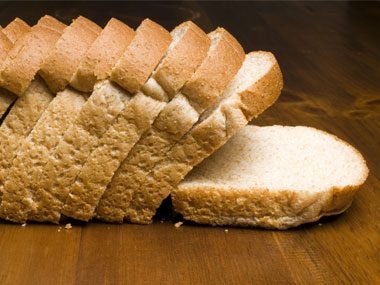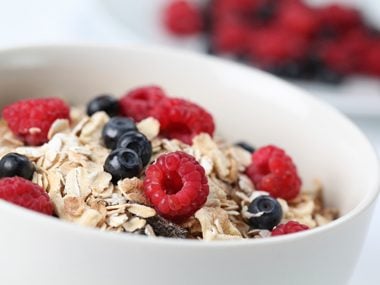The Ultimate Guide to Fitness and Strength Training and Weight Loss
Friday, 27 March 2015
Thursday, 26 March 2015
Wednesday, 25 March 2015
Introducing the Queenax
The Queenax - the latest piece of equipment unveiled by Virgin Active. In many ways it is potentially a great piece of kit. Virgin Active in Chelmsford have brought this in during the last few weeks. As you might be able to tell from the poor picture, it is a frame with monkey bars and TRX mountings.

It has some extra useful features including dip bars and vertical bars if anyone wants to practice the human flag (although I haven't seen anyone try - I will nevertheless use it when I can to start practising this).
So what's the problem I mentioned in yesterday's post?
Firstly you struggle to get anywhere near it if you quite outrageously decide you want to train at peak times due to the grid classes dominating that floor area
Secondly it simply isn't big enough - there are only 3 TRX mountings (although 6 are attached but unless you're working in with someone you know these extra are useless).
Thirdly the Queenax has arrived at the expense of the old TRX frame which was much bigger and meant you could do a variety of exercises including pull-ups off the frame.
Quite why they couldn't make use of some floor area by getting rid of the ridiculous number of cardio machines is a mystery to me. on that subject they wouldn't need as many if they trained their members in how to use the machines (more intensively and therefore achieve better exercise and more throughput!)
If they had kept this then wow! what an improvement it would have been.If they had converted one of their studios to a grid studio then great. But now sadly we have the worst of all worlds.
Happy Training.
Andy@Concept.
Tuesday, 24 March 2015
The Grid - Love It or Loathe It?
Well some of you may wonder what on Earth I am talking about?

Virgin Active have ( no doubt very expensively) had a complete face lift of their gyms (which is a national initiative). The downstairs area has been largely cleared to make way for what I thought was going to be a calisthenics dedicated area. Which in itself is excellent. The floor has been specially covered to reduce sound to help with collapsing weights, bodies etc.

http://www.virginactive.co.uk/inside-our-clubs/gym-floor/fast-classes/thegrid
However, they have added to this floor a matrix of grid lines. Then, for those of us who enjoy solo training, came the huge catch. A whole series of in-your-face 'grid classes' at least 2 or 3 times a day every day, all of course at peak lunch and early evening slots. Of course it doesn't stop there - with it you get the obligatory manic instructor on a microphone set so loud that it ensures that the whole of the town can hear and join in. The participants are required to keep moving to different grid sections doing different manic exercises.
However, they have added to this floor a matrix of grid lines. Then, for those of us who enjoy solo training, came the huge catch. A whole series of in-your-face 'grid classes' at least 2 or 3 times a day every day, all of course at peak lunch and early evening slots. Of course it doesn't stop there - with it you get the obligatory manic instructor on a microphone set so loud that it ensures that the whole of the town can hear and join in. The participants are required to keep moving to different grid sections doing different manic exercises.
Now don't get me wrong - I can see and to some extent appreciate what they're trying to do. It's partly an education of their members to exercise in a much more efficient way and that's to be applauded.
Nevertheless I note it is the usual lags who join any class going and numbers then made up by the gym's own staff! For those of us in the silent majority, this is an in-your face- class depriving us of key facilities at peak times. Don't get me onto the introduction of the Queenax, which I will post on probably tomorrow.
The area that should be for calisthenics is pretty much absorbed by the class and you can't escape the noise anywhere in the gym.
Nevertheless I note it is the usual lags who join any class going and numbers then made up by the gym's own staff! For those of us in the silent majority, this is an in-your face- class depriving us of key facilities at peak times. Don't get me onto the introduction of the Queenax, which I will post on probably tomorrow.
The area that should be for calisthenics is pretty much absorbed by the class and you can't escape the noise anywhere in the gym.
What really gets my goat about this is that more often than not (and certainly today) there is one or two empty studios which were designed for exactly this sort of thing.
For those who want a manic priestess screaming at them in order to train, that was the reason they were built. The concept doesn't actually really require grid lines. Frankly a gym mat will mark the territory or, if impractical, so what if you mark the floor if that's how people really want to train?
So my dilemma -do I leave and find a slightly further away gym which is dedicated to solo training or suffer this.
If you've experienced this at your gym the let us know in the comments.
Andy@Concept
Wednesday, 18 March 2015
How to Lose Weight: 40 Fast, Easy Tips Part 2
How to Lose Weight: 40 Fast, Easy Tips Part 2
21. Make one social outing this week an active one. Pass on the movies and screen the views of a local park instead. Not only will you sit less, but you’ll be saving calories because you won’t chow down on that bucket of popcorn. Other active ideas: a tennis match, a guided nature or city walk (check your local listings), a bike ride, or bowling.
22. Buy a pedometer, clip it to your belt, and aim for an extra 1,000 steps a day. On average, sedentary people take only 2,000 to 3,000 steps a day. Adding 2,000 steps will help you maintain your current weight and stop gaining weight; adding more than that will help you lose weight.
23. Put less food out and you’ll take less in. Conversely, the more food in front of you, the more you’ll eat—regardless of how hungry you are. So instead of using regular dinner plates that range these days from 10 to 14 inches (making them look empty if they’re not heaped with food), serve your main course on salad plates (about 7 to 9 inches wide). Instead of 16-ounce glasses and oversized coffee mugs, return to the old days of 8-ounce glasses and 6-ounce coffee cups.
24. Eat 90 percent of your meals at home. You’re more likely to eat more—and eat more high-fat, high-calorie foods—when you eat out than when you eat at home. Restaurants today serve such large portions that many have switched to larger plates and tables to accommodate them.
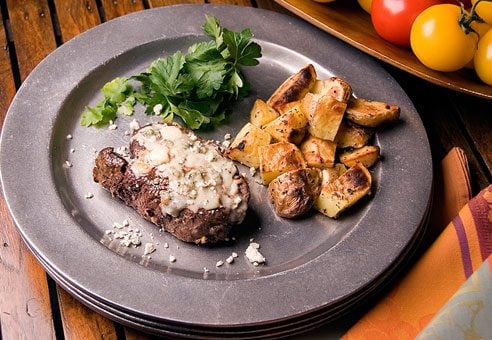 25. Serve food on your plate instead of on platters. If you eat your dinner restaurant style on your plate rather than family style, helping yourself from bowls and platters on the table, you’ll lose weight. Most of us tend to eat an average of 150 percent more calories in the evening than in the morning. You’ll avoid that now because when your plate is empty, you’re finished; there’s no reaching for seconds.
25. Serve food on your plate instead of on platters. If you eat your dinner restaurant style on your plate rather than family style, helping yourself from bowls and platters on the table, you’ll lose weight. Most of us tend to eat an average of 150 percent more calories in the evening than in the morning. You’ll avoid that now because when your plate is empty, you’re finished; there’s no reaching for seconds.
26. Don’t eat with a large group. A study published in the Journal of Physiological Behavior found that we tend to eat more when we eat with other people, most likely because we spend more time at the table. But eating with your significant other or your family, and using table time for talking in between chewing, can help cut down on calories.
27. Order the smallest portion of everything. If you’re out and ordering a sub, get the 6-inch sandwich. Buy a small popcorn, a small salad, a small hamburger. Again, studies find we tend to eat what’s in front of us, even though we’d feel just as full on less.
28. Eat water-rich foods and you’ll eat fewer calories overall. A body of research out of Pennsylvania State University finds that eating water-rich foods such as zucchini, tomatoes, and cucumbers during meals reduces your overall calorie consumption. Other water-rich foods include soups and salads. You won’t get the same benefits by just drinking your water, though. Because the body processes hunger and thirst through different mechanisms, it simply doesn’t register a sense of fullness with water (or soda, tea, coffee, or juice).
29. Bulk up your meals with veggies. You can eat twice as much pasta salad loaded with veggies like broccoli, carrots, and tomatoes for the same calories as a pasta salad sporting just mayonnaise. Same goes for stir-fries, omelets, and other veggie-friendly dishes. If you eat a 1:1 ratio of grains to veggies, the high-fiber veggies will help satisfy your hunger before you overeat the grains.
30. Avoid white foods. There is some scientific legitimacy to today’s lower-carb diets: Large amounts of simple carbohydrates from white flour and added sugar can wreak havoc on your blood sugar and lead to weight gain. While avoiding sugar, white rice, and white flour, however, you should eat plenty of whole-grain breads and brown rice. One Harvard study of 74,000 women found that those who ate more than two daily servings of whole grains were 49 percent less likely to be overweight than those who ate the white stuff.
31. Switch to ordinary coffee. Fancy coffee drinks from trendy coffee joints often pack several hundred calories, thanks to whole milk, whipped cream, sugar, and sugary syrups. A cup of regular coffee with skim milk has just a small fraction of those calories. And when brewed with good beans, it tastes just as great. You can also try nonfat powdered milk in coffee. You’ll get the nutritional benefits of skim milk, which is high in calcium and low in calories. And, because the water has been removed, powdered milk doesn’t dilute the coffee the way skim milk does.
32. If you’re going to indulge, choose fat-releasing foods. They should help keep you from feeling deprived and binging on higher-calorie foods. For instance: honey has just 64 fat releasing calories in one tablespoon. Eggs have just 70 calories in one hard-boiled egg, loaded with fat releasing protein. Part-skim ricotta cheese has just 39 calories in one ounce, packed with fat releasing calcium. Dark chocolate has about 168 calories in a one-ounce square, but it’s packed with fat releasers. And a University of Tennessee study found that people who cut 500 calories a day and ate yogurt three times a day for 12 weeks lost more weight and body fat than a group that only cut the calories. The researchers concluded that the calcium in low-fat dairy foods triggers a hormonal response that inhibits the body’s production of fat cells and boosts the breakdown of fat.
33. Enjoy high-calorie treats as the accent, not the centerpiece Make a spoonful of ice cream the jewel and a bowl of fruit the crown. Cut down on the chips by pairing each bite with lots of chunky, filling fresh salsa, suggests Jeff Novick, director of nutrition at the Pritikin Longevity Center & Spa in Florida. Balance a little cheese with a lot of fruit or salad.
34. Eat cereal for breakfast five days a week. Studies find that people who eat cereal for breakfast every day are significantly less likely to be obese and have diabetes than those who don’t. They also consume more fiber and calcium—and less fat—than those who eat other breakfast foods. Make oatmeal, or pour out a high-fiber, low-sugar cereal like Total or Grape Nuts.
35. Try hot sauce, salsa, and Cajun seasonings They provide lots of flavor with no fat and few calories, plus they turn up your digestive fires, causing your body to temporarily burn more calories. Choose them over butter and creamy or sugary sauces.
36. Eat fruit instead of drinking fruit juice. For the calories in one kid-size box of apple juice, you can enjoy an apple, orange, and a slice of watermelon. These whole foods will keep you satisfied much longer than that box of apple juice, so you’ll eat less overall.
37. Drop your milk type and you cut calories by about 20 percent. If you drink regular, go to 2%. If you already drink 2%, go down another notch to 1% or skim milk. Each step downward cuts the calories by about 20 percent. Once you train your taste buds to enjoy skim milk, you’ll have cut the calories in the whole milk by about half and trimmed the fat by more than 95 percent.
38. Snack on a small handful of nuts. Studies have found that overweight people who ate a moderate-fat diet containing almonds lost more weight than a control group that didn’t eat nuts. Snacking once or twice a day helps stave off hunger and keeps your metabolism stoked. You can also pack up baby carrots or your own trail mix with nuts, raisins, seeds, and dried fruit.
39. Get most of your calories before noon. Studies find that the more you eat in the morning, the less you’ll eat in the evening. And you have more opportunities to burn off those early-day calories than you do to burn off dinner calories.
40. Brush your teeth after every meal, especially dinner. That clean, minty freshness will serve as a cue to your body and brain that mealtime is over.
http://www.rd.com/health/diet-weight-loss/how-to-lose-weight/
Tuesday, 17 March 2015
How to Lose Weight: 40 Fast, Easy Tips Part 1
How to Lose Weight: 40 Fast, Easy Tips Part 1
You know the drill when it comes to losing weight: take in fewer calories, burn more calories. But you also know that most diets and quick weight-loss plans don't work as promised. If you're trying to drop a few pounds fast, these expert tips will make it easy for you to lose the weight quickly.
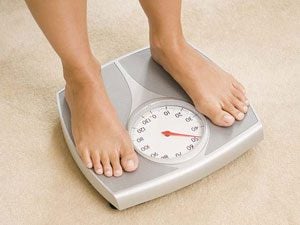
1. Write down what you eat for one week and you will lose weight. Studies found that people who keep food diaries wind up eating about 15 percent less food than those who don’t. Watch out for weekends: A University of North Carolina study found people tend to consume an extra 115 calories per weekend day, primarily from alcohol and fat. Then cut out or down calories from spreads, dressings, sauces, condiments, drinks, and snacks; they could make the difference between weight gain and loss.
2. Add 10 percent to the amount of daily calories you think you’re eating. If you think you’re consuming 1,700 calories a day and don’t understand why you’re not losing weight, add another 170 calories to your guesstimate. Chances are, the new number is more accurate. Adjust your eating habits accordingly.
3. Get an online weight loss buddy to lose more weight. A University of Vermont study found that online weight-loss buddies help you keep the weight off. The researchers followed volunteers for 18 months. Those assigned to an Internet-based weight maintenance program sustained their weight loss better than those who met face-to-face in a support group.
4. Get a mantra. You’ve heard of a self-fulfilling prophecy? If you keep focusing on things you can’t do, like resisting junk food or getting out the door for a daily walk, chances are you won’t do them. Instead (whether you believe it or not) repeat positive thoughts to yourself. “I can lose weight.” “I will get out for my walk today.” “I know I can resist the pastry cart after dinner.” Repeat these phrases and before too long, they will become true for you.
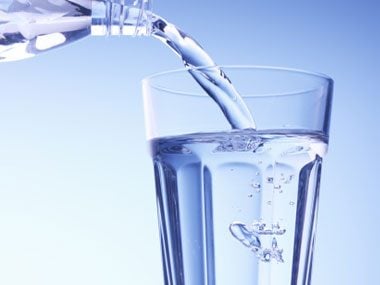
5. After breakfast, stick to water. At breakfast, go ahead and drink orange juice. But throughout the rest of the day, focus on water instead of juice or soda. The average American consumes an extra 245 calories a day from soft drinks. That’s nearly 90,000 calories a year—or 25 pounds! And research shows that despite the calories, sugary drinks don’t trigger a sense of fullness the way that food does.
6. Eat three fewer bites of your meal, one less treat a day, or one less glass of orange juice. Doing any of these can save you about 100 calories a day, and that alone is enough to prevent you from gaining the two pounds most people mindlessly pack on each year.
7. Watch one less hour of TV. A study of 76 undergraduate students found the more they watched television, the more often they ate and the more they ate overall. Sacrifice one program (there’s probably one you don’t really want to watch anyway) and go for a walk instead.
8. Wash something thoroughly once a week. Whether that’s a floor, a couple of windows, the shower stall, bathroom tile, or your car, a 150-pound person will burn about four calories for every minute spent cleaning. Scrub for 30 minutes and you could work off approximately 120 calories, the same number in a half-cup of vanilla frozen yogurt.
9. Wait until your stomach rumbles before you reach for food. It’s stunning how often we eat out of boredom, nervousness, habit, or frustration—so often, in fact, that many of us have actually forgotten what physical hunger feels like. If you’re hankering for a specific food, it’s probably a craving, not hunger. If you’d eat anything you could get your hands on, chances are you’re truly hungry. Find ways other than eating to express love, tame stress, and relieve boredom.
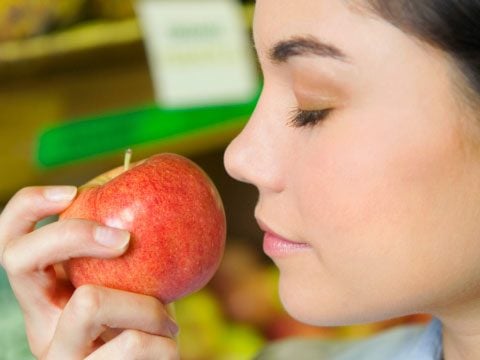
10. Sniff a banana, an apple, or a peppermint when you feel hungry. You might feel silly, but it works. When Alan R. Hirsch, M.D., neurological director of the Smell & Taste Treatment and Research Foundation in Chicago, tried this with 3,000 volunteers, he found that the more frequently people sniffed, the less hungry they were and the more weight they lost—an average of 30 pounds each. One theory is that sniffing the food tricks the brain into thinking you’re actually eating it.
11. Stare at the color blue. There’s a good reason you won’t see many fast-food restaurants decorated in blue: it functions as an appetite suppressant. So serve up dinner on blue plates, dress in blue while you eat, and cover your table with a blue tablecloth. Conversely, avoid red, yellow, and orange in your dining areas. Studies find they encourage eating.
12. Eat in front of mirrors and you’ll lose weight. One study found that eating in front of mirrors slashed the amount people ate by nearly one-third. Having to look yourself in the eye reflects back some of your own inner standards and goals, and reminds you of why you’re trying to lose weight in the first place.
13. Spend 10 minutes a day walking up and down stairs. The Centers for Disease Control says that’s all it takes to help you shed as much as 10 pounds a year (assuming you don’t start eating more).
14. Walk five minutes for at least every two hours. Stuck at a desk all day? A brisk five-minute walk every two hours will parlay into an extra 20-minute walk by the end of the day. And getting a break will make you less likely to reach for snacks out of antsiness.
15. You’ll lose weight and fat if you walk 45 minutes a day, not 30. The reason we’re suggesting 45 minutes instead of the typical 30 is that a Duke University study found that while 30 minutes of daily walking is enough to prevent weight gain in most relatively sedentary people, exercise beyond 30 minutes results in weight and fat loss. Burning an additional 300 calories a day with three miles of brisk walking (45 minutes should do it) could help you lose 30 pounds in a year without even changing how much you’re eating.

16. Don’t buy any prepared food that lists sugar, fructose, or corn syrup among the first four ingredients on the label. You should be able to find a lower-sugar version of the same type of food. If you can’t, grab a piece of fruit instead! Look for sugar-free varieties of foods such as ketchup, mayonnaise, and salad dressing. Also, avoid partially hydrogenated foods, and look for more than two grams of fiber per 100 calories in all grain products. Finally, a short ingredient list means fewer flavor enhancers and empty calories.
17. Put your fork or spoon down between every bite. At the table, sip water frequently. Intersperse your eating with stories for your dining partner of the amusing things that happened during your day. Your brain lags your stomach by about 20 minutes when it comes to satiety (fullness) signals. If you eat slowly enough, your brain will catch up to tell you that you are no longer in need of food.
18. Throw out your “fat” clothes for good. Once you’ve started losing weight, throw out or give away every piece of clothing that doesn’t fit. The idea of having to buy a whole new wardrobe if you gain the weight back will serve as a strong incentive to stay fit.
19. Close the kitchen for 12 hours. After dinner, wash all the dishes, wipe down the counters, turn out the light, and, if necessary, tape closed the cabinets and refrigerator. Late-evening eating significantly increases the overall number of calories you eat, a University of Texas study found. Stopping late-night snacking can save 300 or more calories a day, or 31 pounds a year.
20. Walk before dinner and you’ll cut calories AND your appetite. In a study of 10 obese women conducted at the University of Glasgow in Scotland, 20 minutes of walking reduced appetite and increased sensations of fullness as effectively as a light meal.
Monday, 16 March 2015
Sunday, 15 March 2015
Saturday, 14 March 2015
What will you gain from frequently practicing and performing Turkish get-ups?
What will you gain from frequently practicing and performing Turkish get-ups?
- Improved shoulder stability and flexibility
- The ability to train the whole body as one unit
- A strengthened mid-section improving the reflexive stability of the core, and providing improved injury prevention
- Improved interaction of the muscular chains, intramuscular coordination, and improved interaction between the brain and muscles
- Improved fat burning capacity as large muscle groups are activated causing high calorie demands
Gray Cook, physical therapist and co-founder of Functional Movement Systems refers to the Turkish get-up as “Loaded Yoga”.
There are Tons of Possibilities for Using Turkish Get-Ups in Your Training.
Performing the TGU without weight or with a light weight is a perfect warm-up exercise, or as a component of active recovery/regeneration days. Performed under heavy load, the TGU is one of the best full body strengthening exercises on the planet. For men, a goal of 50% body weight and for women 33% of body weight are absolutely realistic. But as you saw in the video above, these guidelines are relative and can be exceeded!
Another thing that I really like about the get up is how it allows you to lift a weight overhead that you might not be able to press yet. Here is a get-up variation that can help you prepare for heavy presses: choose a weight you can’t (yet) press and bring it over your head by performing a Turkish get-up. Now go take a walk with the weight overhead. By doing this, your body gets used to the weight being in lock-out position overhead and will automatically learn how to stabilize it.
There are tons of get-up variations which provide different focuses on many training aspects. Another variation is performing a bottom-up Turkish get-up to challenge and improve your grip. Hold the kettlebell in a pistol grip (the bottom of the kettlebell will be pointing at the ceiling) and get up from the ground. This is also a great variation for using kettlebells which would ordinarily be too light for your training.Finally, I have a variation perfect for everyone who has just learned the TGU. This variation will help to “grind” the single positions—it is called the Pyramid. You’ll only need a light kettlebell for it, because you will perform each position repeatedly. Also, be sure to always move into each single position perfectly, and always work in a very controlled manner.
http://rkcblog.dragondoor.com/getting-the-most-out-of-your-turkish-get-up/?gl=240483538&inf_contact_key=78cf79
http://rkcblog.dragondoor.com/getting-the-most-out-of-your-turkish-get-up/?gl=240483538&inf_contact_key=78cf79
Generally, the Turkish get-up is About Working Slowly and Controlled, Eventually Under a Great Load.
Maybe the get-up is simultaneously so loved and hated is because it can help you get a great deal better, stronger and healthier while rigorously pointing out issues that still need work. Together with the Hardstyle kettlebell swing, it can help you to constantly get constantly stronger, more flexible and even improve your overall endurance.
Hopefully my examples have shown you what an incredibly versatile exercise the TGU is, and that it’s always a good thing to continue improving your get-up.
Friday, 13 March 2015
32kg Turkish Get Up - 50% vom Körpergewicht
The TGU Consists of 9 Positions, Making It a Complex Exercise.
Thursday, 12 March 2015
Getting the Most Out of Your Turkish Get-Up
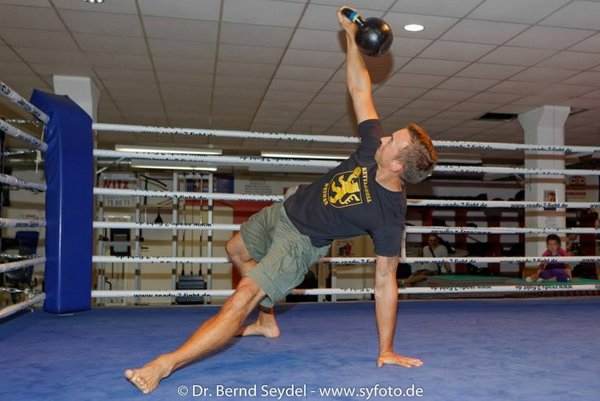
The Turkish get-up… beginners hate it and experienced kettlebellers praise it. The TGU is one of the most fundamental movements because it progresses from lying to standing with a kettlebell. Along with the Hardstyle kettlebell swing, the TGU is one of the basic exercises which will prepare you well for all of the other exercises of the RKC training system.
My earlier post about the get-up was more philosophical and discussed the five things the get-up teaches you about life. Today’s post focuses more on the practical aspects of this movement pattern and how you can implement it in your training to get the most out of it.
 Your body learns to work as a whole unit when performing a Turkish get-up.
Your body learns to work as a whole unit when performing a Turkish get-up.
This exercise integrates every muscle in your body. If there’s a weak spot somewhere, you will find it very quickly—this is also one of the reasons why beginners especially have a hard time with the TGU. The same goes for athletes who are used to training isolated muscles. I have seen many trained 100 kg guys struggling to do their get-ups with a 12 kg kettlebell.
But, this is also what experienced kettlebellers love about the TGU: when you take the time to learn this movement pattern and can flawlessly perform get-ups with a 24 kg kettlebell, many good changes have already happened within your body. The TGU creates flexibility and mobility in the joints along with the basic strength you need to playfully get up from the ground with weight.
Over 200 years ago, Turkish wrestlers already knew that the TGU could prepare them for many things in life. Back then, wrestlers were required to get up while holding half of their body weight in one hand before they could even consider participating in training specific to wrestling. This is also why the get-up is often called the Turkish get-up.
Wednesday, 11 March 2015
Does the Ornish Diet Really Work?
The idea that low-fat diets, such as those recommended for
so many years by the US government and the American Heart Association (AHA),
are effective at preventing atherosclerotic cardiovascular disease has now been
generally discredited. Over the past several decades, clinical studies in which
dietary fat was restricted to less than 25% of daily calories have failed to
demonstrate a cardiovascular benefit. A few years ago, the AHA quietly dropped
its low-fat diet recommendation.
There is, however, one glaring exception to the evidence
that low-fat diets are not effective at preventing heart disease - the Ornish
diet. The Ornish diet (and similar diets) not only restrict dietary fat quite
severely (to less than 10% of daily calories), but also require any ingested
fats come from purely plant sources. In both the medical literature and in the
popular press, the Ornish diet is held out as having been proven effective in
preventing the progression of coronary artery disease (CAD), and even in
facilitating an actual improvement in coronary artery plaques.
Is this true? Despite the fact that the AHA-style
fat-restricted diet has failed to prevent atherosclerosis, does the
ultra-restrictive Ornish-type diet work?
The Ornish Study
All of the books, websites, TV appearances, speeches, editorials,
documentaries, etc., that tout the effectiveness of the Ornish diet can be
traced back to a single clinical trial, the Lifestyle Heart Trial, conducted in
the 1980s and 1990s by Dr. Dean Ornish and his group at the California Pacific
Medical Center in San Franciso.
They enrolled 48 patients (45 of whom were men) who had
known CAD. Twenty-eight were randomized to a special program of comprehensive
lifestyle changes which included the severely fat-restricted, vegetarian Ornish
diet, along with smoking cessation, meditation and stress management, and a
formal exercise program. The other 20 patients, the control group, did not
receive this intensive lifestyle management program. During a 5-year follow-up
period, patients in the study group experienced significantly fewer cardiac
events than those in the control group, and also had a 3% regression in the
size of their coronary artery plaques (as compared to an increase in plaques in
the control group).
It is a little disturbing, to me at least, to consider that
the Ornish empire is built on this one small study. For one thing, there was a
substantial drop-out of patients during this study, and these patients were
subsequently excluded from analysis. Drop-outs are especially important in
small studies since the loss of data can significantly impact the results. The
small size of the study also produced substantial baseline differences between
the two groups. For instance, the control group had higher total cholesterol
and LDL cholesterol values, and were older and thinner than the treatment
group. Again, these sorts of problems are common to small clinical trials, and
they create inherent difficulties in interpreting differences in outcomes
between the groups.
More importantly, the idea that the Ornish diet causes
reversal of atherosclerosis is quite problematic. Comparing results from
different 2-D angiograms made at different times (as was done in this study) is
famously fraught with error, since tiny differences in the angles of the
recorded images can yield big differences in the calculation of plaque size.
Even if such measurements were precise - and they are far from precise -
accurately detecting a 3% change in plaque size cannot be accomplished with any
degree of confidence with 2-D angiography. This limitation is not the fault of
the researchers - better techniques did not exist in those days. (They do exist
today, should the Ornish study ever be repeated.) But this limitation is
nonetheless critical, and calls into great question the frequent claims made by
proponents that the Ornish diet reverses atherosclerosis. Such methodological
limitations would make it very difficult for a study like this even to be
accepted for publication today in a peer-reviewed medical journal.
Finally, even if the reported results of the Ornish study
did turn out to be accurate, it is impossible to attribute any of this benefit
specifically to the Ornish diet. This is because the other three interventions
applied to the study group (smoking cessation, stress management, and regular
exercise) are all known to improve cardiac outcomes in patients with CAD. The
improved outcomes seen in the treatment group are explainable by these other
three interventions; any benefit from the Ornish diet itself cannot be inferred
in this trial.
There is little doubt that an aggressive lifestyle
management program is a useful thing in patients with CAD, and the Ornish study
(which, after all, was called the Lifestyle Heart Trial, and not the Ornish
Diet Trial) certainly employed aggressive lifestyle changes. But especially in
view of the general failure of low-fat diets to improve cardiac outcomes in
other studies, substantial doubt exists as to how much benefit the dietary
component of this study contributed to the favorable outcomes. A well designed
clinical trial would be required to answer this question.
The Bottom Line on the Ornish Diet
Based on the results of the Ornish study - the small
randomized trial upon which all the famous claims regarding the Ornish diet are
based - the notion that an ultra-low fat vegetarian diet improves CAD should be
regarded as an intriguing hypothesis. But that’s all it is - an unproven
hypothesis, and not a proven fact. I for one think somebody ought to design a
study to see whether the hypothesis is true.
And if you are going to follow an Ornish-type diet, be
careful of that vegetable oil.
Saturday, 7 March 2015
The Lying Back Extension - the Miracle Cure?
Morning All - its a lovely morning here in the UK
And even better for me - today I got out of bed and barely noticed the back pain troubling me this last week. I have been noticing a distinct improvement for the whole 9 days since I foolishly went too heavy in the deadlift (see previous post last week)
I have done various things - iced at the beginning (although no access to ice immediately after so I used an ice spray - not convinced its anywhere near as good but better than nothing) and anti inflammatory gel rubbed in. I also moved about as much as possible as its far more painful after sitting. And I stretched thoroughly including immediately after the accident (and used a foam roller). The curved back stretch seems to help considerably.
Above all though I have made regular use of the lying back extension.
I do the main version - superman pose and the legs raised at the same time - 30 reps with a distinct 1 / 2 second pause at the top where I feel the stretch. Straight away the pain relief was fairly obvious. At the beginning the first few reps sparked a little pain and so I would restrict my movement until it hit. After about 6 or 7 reps the back would seem to be fully 'oiled' and I would then go for the full stretch. After 30 reps it was for a little while as if I hadn't any issue.
See my earlier posting today on the video of how to do the lying back extension.
I would pack in as many sets as possible throughout the day and also quickly reintroduced my leg stretching regime as my knee issue requires and also because I believe they're all connected with each other (the problems that is).
So here we are - Day 9. It is still there but a shadow of what it was last week. For an injury to go in such a short time (more or less) is astonishing and I am quite convinced it is the lying back extension that I have to give thanks for. I have been there before - same injury when my son was becoming bigger and heavier but still couldn't walk and I was (badly as it turned out) getting him in and out of the car seat. It worked very well then too and I have often recommended to others with back pain. Now I've had to return in full force to use it again.
I have a resolve to incorporate this into my body weight training regime going forward. The one issue is progression, which as many of you will know by now is the key to strength training (but not in the way I did with the deadlift!!). I guess I can start adding more reps and even wrist and leg strap weights but this again is limited. Beyond that it is probably ultimately replaced by the bridge, but there the problem is that for some years the bridge is about arm strength before the back gets really hit (when you start bending it within the exercise and eventually doing the opening and closing bridges - way beyond me I'm afraid)
But in the meantime I am thankful of how well one exercise is working and how ' normal' I feel again now. Still no dead-lifting for at least another month though!
Happy training!
Friday, 6 March 2015
Tuesday, 3 March 2015
How to Cure a Bad Back
Well its a few days on and the back is still sore. My own stupid fault and I'm still annoyed at my text book errors. Too much weight increase too quickly and too many reps to boot.
So I've been busy researching bad backs but no new revelations. My own theory of doing the lying back extension as many times as possible seems to be as good as anything.

I do 30 at a time and pause on the end of the upward movement. Certainly after here is real relief and for a short while I am fooled into thinking its gone. I had a similar injury when my eldest son was a baby and I was getting him in and out of the car seat. It worked then and is still the best way I know of dealing with a lower back injury.
I'm also stretching by arching back and then bending forward. Finally I'm using the anti-inflam gel at night.
The pain comes back once I've been sitting down for a while and when in bed.
So I shall keep experimenting to see how to get the repair work working In the meantime I'll lay off the weights!
Happy training!
So I've been busy researching bad backs but no new revelations. My own theory of doing the lying back extension as many times as possible seems to be as good as anything.
I do 30 at a time and pause on the end of the upward movement. Certainly after here is real relief and for a short while I am fooled into thinking its gone. I had a similar injury when my eldest son was a baby and I was getting him in and out of the car seat. It worked then and is still the best way I know of dealing with a lower back injury.
I'm also stretching by arching back and then bending forward. Finally I'm using the anti-inflam gel at night.
The pain comes back once I've been sitting down for a while and when in bed.
So I shall keep experimenting to see how to get the repair work working In the meantime I'll lay off the weights!
Happy training!
Subscribe to:
Posts (Atom)

